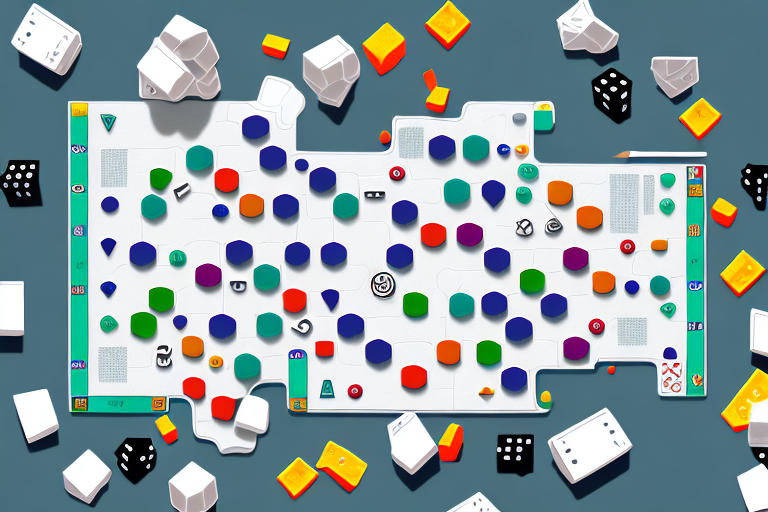Understanding the Concept of Gamification
Gamification refers to the integration of game design elements into non-game contexts to enhance user engagement, motivation, and overall experience. By incorporating elements such as badges, points, leaderboards, and challenges, businesses can encourage desired behaviors and interactions from their audience. According to a 2022 study by Forrester Research, gamification can increase user engagement by up to 30% when implemented effectively.
Definition and Key Components
At its core, gamification leverages the psychological drivers that make games appealing, such as competition, achievement, and recognition. Key components include:
- Points: Quantifiable rewards that track user progress.
- Badges: Visual representations of achievements.
- Leaderboards: Rankings that foster competition among users.
- Challenges: Tasks that users must complete to earn rewards.
How Gamification Influences User Behavior
By integrating these game mechanics, businesses can steer user behavior toward specific goals. For instance, leaderboards can motivate users to increase their activity to climb the rankings, while badges can provide a sense of accomplishment that encourages continued participation. A study published in the Journal of Business Research found that gamification significantly boosts user motivation and engagement across various industries.
The Benefits of Using Gamification in Business
Implementing gamification strategies can offer multiple advantages for businesses, ranging from enhanced user engagement to improved employee productivity.
Increased Engagement and Retention
Gamification can drive higher levels of user engagement by making interactions more enjoyable and rewarding. A survey by TalentLMS indicates that 89% of companies see increased user engagement through gamified experiences. Additionally, retention rates can improve as users are more motivated to return and continue interacting with the product or service.
Enhanced Data Collection and Insights
Through gamification, businesses can gather valuable data on user behavior, preferences, and interactions. This data can inform decision-making processes and help tailor offerings to better meet user needs. For example, tracking which challenges are most popular can provide insights into user interests and motivations.
Boosting Employee Productivity and Motivation
Gamification isn't limited to customer engagement; it can also be applied internally to improve employee performance. By introducing game-like elements into daily tasks, employees can experience increased motivation and a greater sense of accomplishment. According to a report by Deloitte, companies that implement gamification for employee engagement have seen a 48% increase in productivity.
Implementing Effective Gamification Strategies
Identifying Business Goals and Objectives
The foundation of a successful gamification strategy lies in clearly defining the business goals and objectives. Whether it's increasing sales, enhancing customer loyalty, or improving employee training, understanding what you aim to achieve is crucial. This clarity ensures that the gamification elements align with the desired outcomes.
Choosing the Right Gamification Mechanics
Selecting appropriate game mechanics is essential for creating an engaging experience. Businesses should consider factors such as the target audience, the context of use, and the specific behaviors they wish to promote. Common mechanics include point systems, achievement badges, leaderboards, and interactive challenges.
Designing an Engaging User Experience
A seamless and appealing user interface enhances the effectiveness of gamification. The game elements should be intuitively integrated into the platform, ensuring that they complement rather than distract from the primary content or functionality. Personalization and relevance of rewards also play a significant role in user satisfaction.
Leveraging Technology and Social Media
Modern technologies like Virtual Reality (VR), Augmented Reality (AR), and Machine Learning (ML) can elevate gamification strategies by providing immersive and personalized experiences. Additionally, integrating social media features allows users to share their achievements and foster a sense of community, further enhancing engagement.
Measuring and Optimizing Gamification Efforts
Key Metrics to Track
To assess the effectiveness of gamification strategies, it's essential to monitor key performance indicators (KPIs) such as:
- User Engagement: Measures how actively users interact with the gamified elements.
- Retention Rates: Tracks how many users continue to engage over time.
- Conversion Rates: Assesses the percentage of users taking desired actions.
Analyzing User Feedback
Collecting and analyzing feedback from users provides insights into their experiences and preferences. Surveys, interviews, and user testing can reveal what aspects of the gamification strategy are effective and which areas require improvement.
Continuous Improvement and Iteration
Gamification is not a set-it-and-forget-it solution. Continuous monitoring and adjustments based on data and feedback are necessary to keep the strategy aligned with evolving business goals and user needs. Iterative testing ensures that the gamification elements remain relevant and effective.
Common Mistakes to Avoid in Gamification
Lack of Understanding of Audience
One of the most common pitfalls is failing to understand the target audience's preferences and motivations. Without this insight, gamification elements may not resonate, leading to decreased engagement.
Overcomplicating Gamification Mechanics
Introducing overly complex game mechanics can overwhelm users and deter participation. Simplicity and clarity are key to ensuring that users can easily engage with the gamified elements.
Irrelevant Rewards and Challenges
Providing rewards that do not align with user interests or business objectives can diminish the effectiveness of gamification. It's crucial to design rewards and challenges that are meaningful and relevant to the users.
Ignoring the Importance of Feedback
Feedback mechanisms, such as progress indicators and notifications, are vital for maintaining user motivation. Lack of feedback can lead to user frustration and disengagement.
Case Studies: Successful Gamification in Action
Duolingo
Duolingo, a language learning platform, employs gamification through points, badges, and leaderboards to motivate users. This approach has contributed to its popularity, with over 500 million users worldwide as of 2023.
Nike Run Club
Nike's Run Club app uses gamification to encourage users to set and achieve running goals, participate in challenges, and compete with friends. This has not only boosted user engagement but also strengthened brand loyalty.
Future Trends and Predictions for Gamification
Emerging Technologies
Technologies like VR and AR are set to revolutionize gamification by creating more immersive and interactive experiences. These technologies enable users to engage with gamified elements in novel and engaging ways.
Personalization and Machine Learning
Machine Learning (ML) can tailor gamification strategies to individual user preferences, enhancing personalization and effectiveness. By analyzing user data, ML algorithms can deliver customized challenges and rewards.
Expanding into New Industries
Gamification is increasingly being adopted across diverse industries, including healthcare, education, and finance. This expansion is driven by the proven benefits of gamification in enhancing engagement and achieving specific business objectives.
In conclusion, gamification is a highly effective tool that can help businesses engage their audience, create valuable interactions, and increase revenue. Implementing a successful gamification strategy involves understanding the audience's needs, creativity, carefully selecting relevant game mechanics, and constantly measuring, iterating, and adapting. Applying a professionally thought-through gamification strategy is a sure-fire way to increase engagement, loyalty, and user satisfaction whilst improving the bottom line.




















